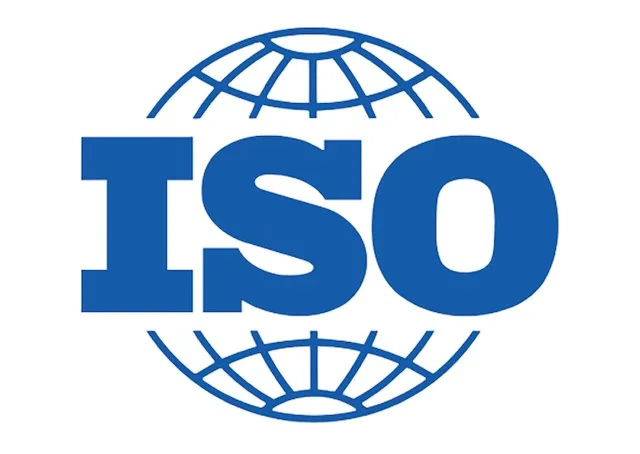Flux Aviation - Get It Made's Under 30s Grant Winners
Congratulations to Flux Aviation, Get It Made's Under 30s Grant Winners. Read how they intend to use the grant here.

Congratulations to Flux Aviation, joint-winner of Get It Made’s Under 30’s grant application. An organisation run by senior engineers with experience ranging from aerospace, to product design, to electric vehicles, Flux Aviation is driven by a passion for flying, and a vision of electric flight for all. With the help of this grant, Flux Aviation will continue to work towards its mission of a future in which flying is clean, quiet, and accessible for everyone.
We are delighted to be able to offer this grant to this exciting organisation, and we are very excited to see the progress they make with the resources of our grant at their disposal. Read below to find out more about their organisation, what it is they’re trying to achieve, and how they intend on utilising the resources provided by this grant to take their business to the next level.
What is your organisation’s goal?
Flux Aviation is on a mission to electrify the general aviation sector. This sector of aviation is under threat from increasing operating costs and sustainability targets. Existing combustion engines are loud, dirty and extremely expensive to run and maintain. Even with technological improvements, new combustion engines are not going to be a long-term solution for general aviation powertrains. We believe that the future of flight is electric.
As our first product, we are developing electric motors and battery systems for small 2- and 4-seat aircraft. This 75kW battery electric powertrain system is designed as a drop-in replacement for existing combustion engines. Compatibility with a range of existing aircraft types will allow us to supply existing market without having to design a completely new airframe.
Our initial customers will be private pilots and aircraft owners wanting to switch their own aircraft to electric power. We are also partnering up with aircraft manufacturers to provide them with electric powertrains for factory new aircraft. With the 75kW battery electric powertrain system we are targeting the light-sport aircraft (LSA), experimental and kit-built aircraft market. These categories are the fastest growing segments of general aviation.

What will you use this grant for?
We are currently in the process of designing, building and testing prototypes of our electric powertrains. Everything we do is governed by two main constraints – mass and safety. In an aerospace application every gram counts and to succeed in our mission we are developing the entire powertrain to be an integrated and heavily optimised unit. We are utilising high-performance aluminium alloys, titanium and composites to achieve the ultimate performance.
We are passionate about safety and designing fully redundant systems. We are excited by the prospect of dramatically improving aircraft safety by switching to electric power. This means solving a lot of challenges and iterating new designs quickly. We believe in the values of rapid prototyping and verifying our simulations with experimental testing. But this also means a lot of parts that have to be made and tested (often destructively) in order to learn quickly and develop improved designs. Such as our lithium battery packs that are designed to withstand a full battery fire for over 5 minutes without failure.
Having a manufacturing partner that has state-of-the-art capabilities and can support us with quality components will be key as we are starting the build of our full system. The grant will allow us to manufacture and test parts more quickly, paving the way towards test flights of our electric aircraft by end of the year. It will also allow to explore novel designs and achieve higher performance thanks to access to new capabilities and manufacturing techniques.
What positive environmental impact can your organisation create?
We are developing fully electric powertrains for general aviation aircraft as a sustainable and economical alternative to conventional combustion engines. Electrification has clear financial benefits and reduces the total cost of ownership by a great margin. Firstly, the cost of charging batteries for 1 hour of flight is about 10x cheaper than the cost of aviation fuel at today’s prices. Secondly, due to simpler construction and fewer moving parts, the maintenance of electric powertrains will be cheaper and less frequent.
Electric flight has the potential to transform the flight experience itself, both for pilots and passengers. Greenhouse gas emissions at the point of use and the need for leaded aviation fuel will be eliminated, improving air, soil and groundwater quality around airfields. Thanks to quiet electric motors, noise emissions will be cut, reducing noise complaints associated with airfield operations around populated areas. In the air, passengers will benefit from increased comfort, even being able to talk freely without bulky noise-cancelling headsets. On the ground, large parts of pre- and post-flight checklists that focus on the engine, oil and fuel inspection can be eliminated, meaning that pilots can spend more time flying. Having fewer moving parts means that electric powertrains can be made safer and more reliable. They can also be designed with full redundancy and failsafe systems in mind.
We believe that this innovation will re-ignite the general aviation industry and allow it to thrive into the future. A future that is quiet, clean and affordable for everyone.
If you are interested in applying to one of the many other grants on offer here at Get It Made, ranging from aerospace to subsea, visit our grants page here and see if you are eligible to apply today!
For information on our services or quotes, feel free to get in touch, or make a specific enquiry (i.e. for a CNC machining quote) today.

Leave it to our manufacturing specialists
Get a 24 hour, engineer made quote and design review to start your manufacturing project off on the right foot
Get your production-ready quote in 24 hours
All projects are reviewed by real engineers to ensure accuracy, catch mistakes and unlock DFM improvements
Bespoke quote in 24 hours
Get It Made is proud to provide a human service. Get a quote and free design review by an experienced engineer to see how we make manufacturing simple.









.webp)
